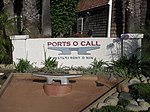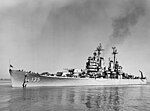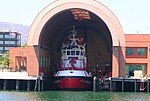Southern California Marine Institute
1993 establishments in CaliforniaBiological research institutes in the United StatesCalifornia State Polytechnic University, PomonaCalifornia State UniversityCalifornia State University, Dominguez Hills ... and 15 more
California State University, FullertonCalifornia State University, Long BeachCalifornia State University, Los AngelesCalifornia State University, NorthridgeCalifornia State University, San BernardinoEducation in Los Angeles County, CaliforniaInstitutes of the University of Southern CaliforniaLaboratories in CaliforniaOccidental CollegeOceanographic organizationsResearch at Cal Poly PomonaResearch institutes established in 1993Research institutes in CaliforniaScience and technology in Greater Los AngelesTerminal Island
The Southern California Marine Institute (SCMI) is a multi-campus research facility and non-profit oceanographic institution headquartered in Terminal Island, California.
Excerpt from the Wikipedia article Southern California Marine Institute (License: CC BY-SA 3.0, Authors).Southern California Marine Institute
South Seaside Avenue, Los Angeles
Geographical coordinates (GPS) Address Nearby Places Show on map
Geographical coordinates (GPS)
| Latitude | Longitude |
|---|---|
| N 33.735969 ° | E -118.270158 ° |
Address
South Seaside Avenue 868
90731 Los Angeles
California, United States
Open on Google Maps










